Caring for Flowers
Waterlily flowers need some special care!
Here are some tips to help you enjoy them at their best for 5-7 days.
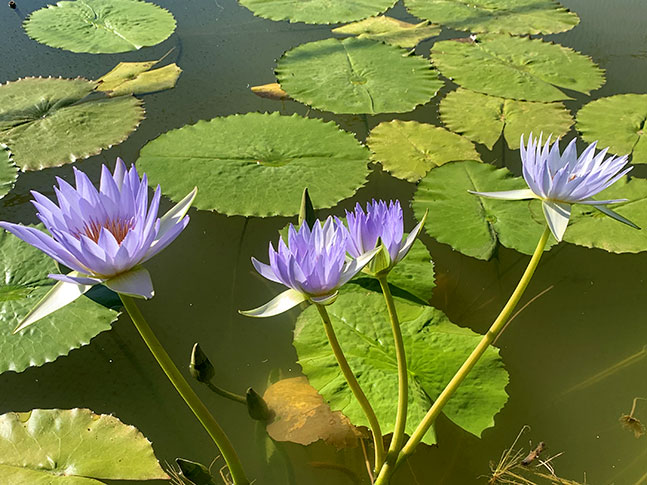
There are two types of waterlily plants. Hardy and Tropical. In the Southwest, Hardy Waterlilies flower from September to March and Tropical Waterlilies flower from December to June.
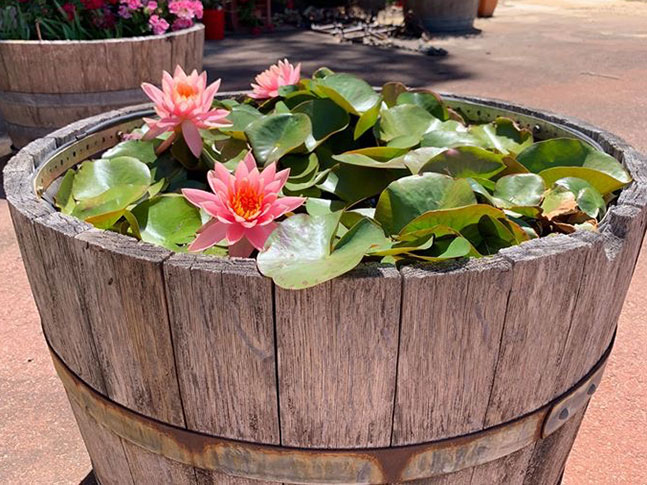
You can keep your plant in its pot or replant into a soil based pond.
Waterlilies need six hours of full sun a day to flower, in still water with 20-40 cm of water above the pot.
They are heavy feeders and grow in soil in an aquatic environment. Bigger pots or more soil in the pond grow bigger plants and flowers.
Repot your plant in spring once a few new leaves reach the surface using loamy soil, not compost, and half a cup of “blood n bone” pellets for a 200mm pot, or equivalent.
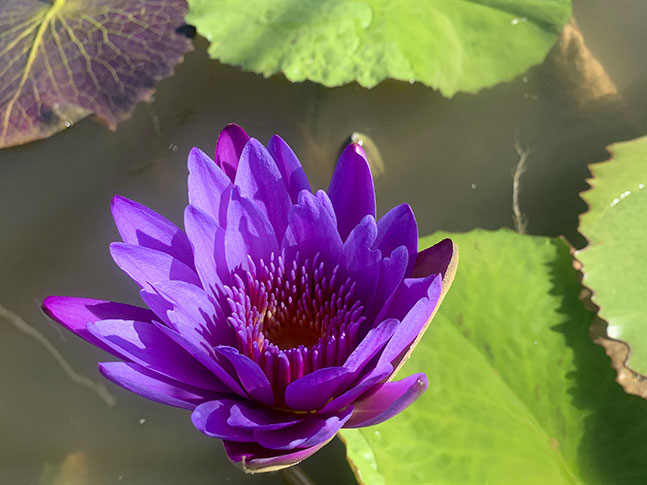
Fertilise at least once, or monthly if you can, during the flowering season by making a hole at the edge of the pot, or near the roots, and put a teaspoon of blood and bone at the four points of the compass around the plant and fill up the hole with soil. This will not harm your fish.
If your pond has a sludgy layer, cut the bottom off the pot to let the roots through.
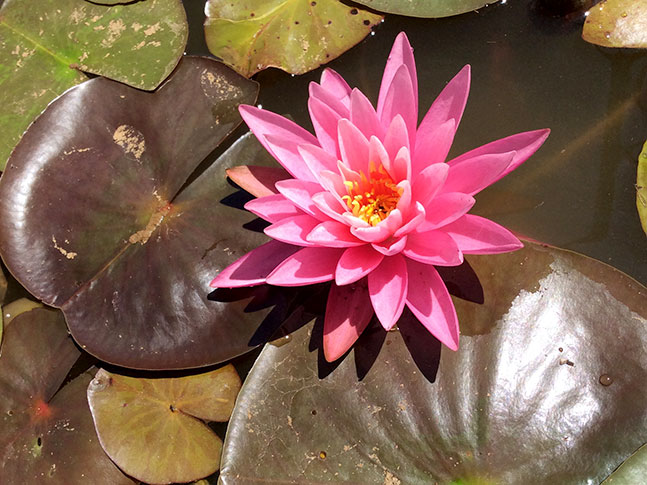
Waterlily plants go dormant in winter then come back in spring.
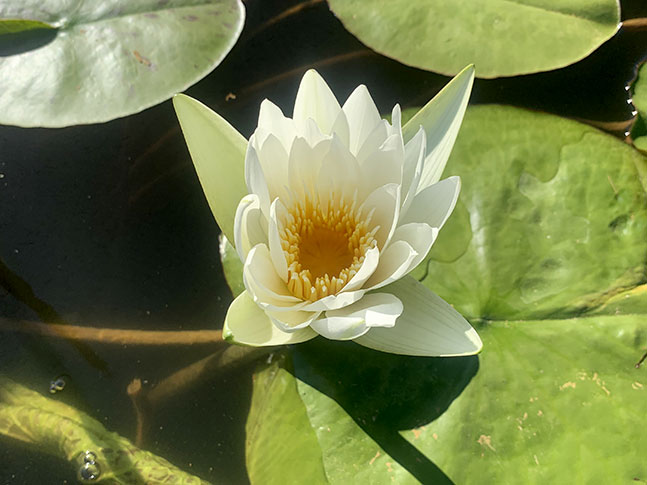
These plants are only for ponds not natural waterways.
Dispose of plants by drying them out and composting.
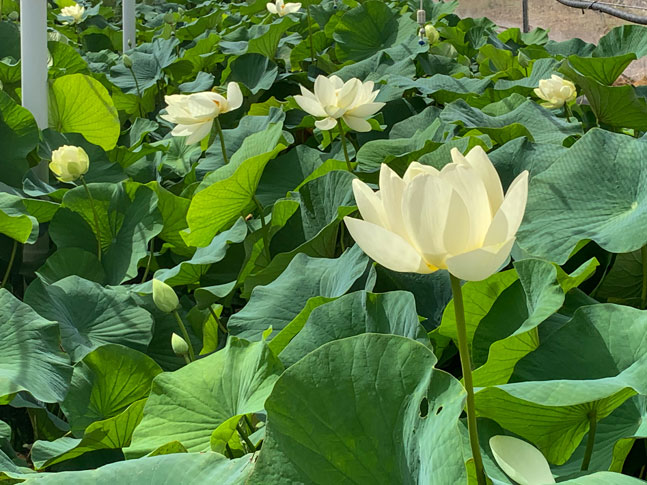
These lotus produce stunning white or pink flowers with a gold centre from Dec-March, and umbrella type foliage from November to April. The seed pods dry out and last for years.
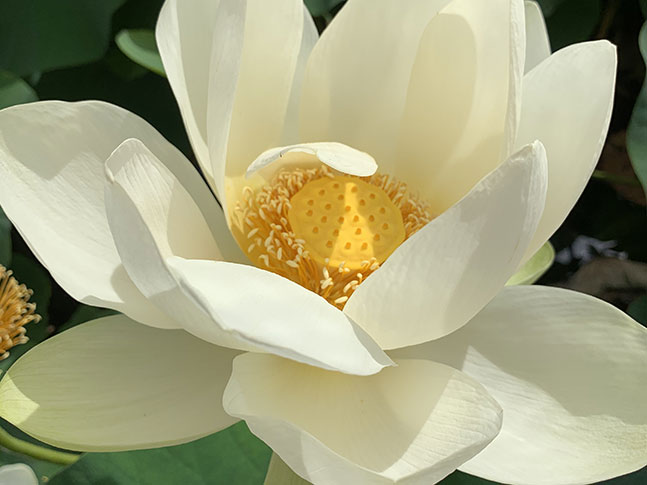
Lotus need six hours of full sun a day to flower and a water level at least10 cm above the soil, but less than a metre. If they dry out, they die. Lotus grow with their roots in soil in an aquatic environment.
Lotus runners need at least three nodes to be viable, don’t separate the runners, and be very protective of the growing point at the leading nodes.
You can wind the runners gently into a circle to plant into a leak proof large pot or barrel, or keep them straight for a larger area.
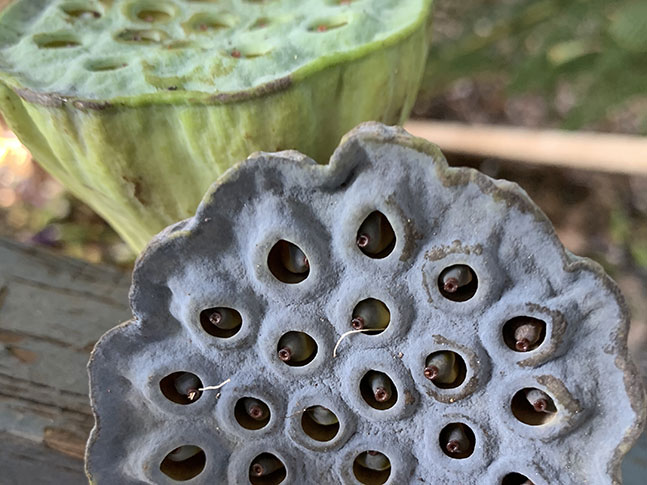
They are heavy feeders and grow well with blood and bone pellets mixed into loamy soil before planting. Don’t use compost or soil with a lot of organic matter.
Wet the soil thoroughly before planting and mix fertiliser in generously. Make a trench in the shape of your runners, deep enough to cover the root balls at each node with the growing points pointing up.
Once the runner roots are covered over with soil, and any leaves are free to rise up, fill the area so that the water level is at least 10 cm (up to 1meter) above the soil level. Top up daily to replace evaporation.
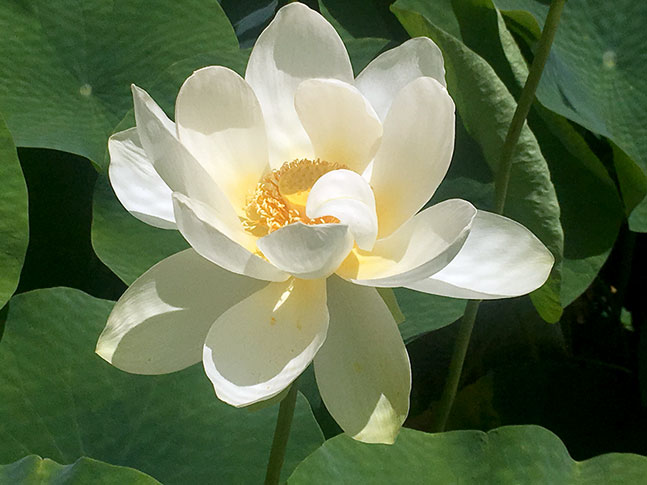
Lotus will flower their second year. They go dormant in winter and lose all their leaves and come back in October. Our plants are acclimatised to our Southwest conditions.
Lotus plants produce floating leaves in spring first and then aerial leaves will appear. Fertilise once aerial leaves start and then monthly through flowering, with blood and bone pellets mixed into the soil near the root balls.
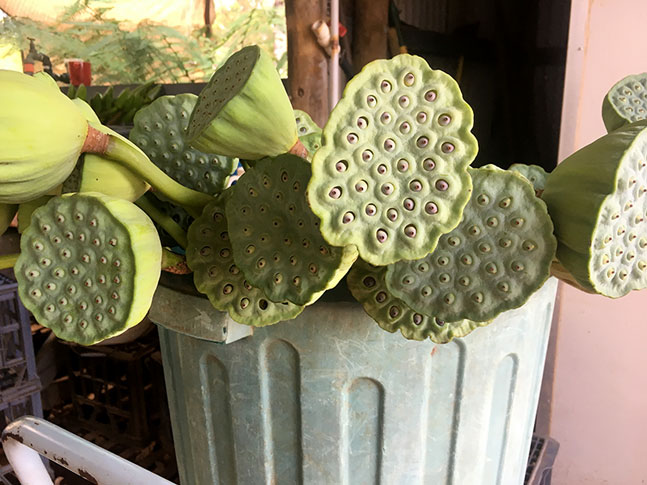
Lotus are extremely vigorous plants and will out compete any plants close by.
Never plant Lotus in natural waterways. These plants are for ponds or pots only.
To dispose of lotus plants dry them out completely and then compost them.
